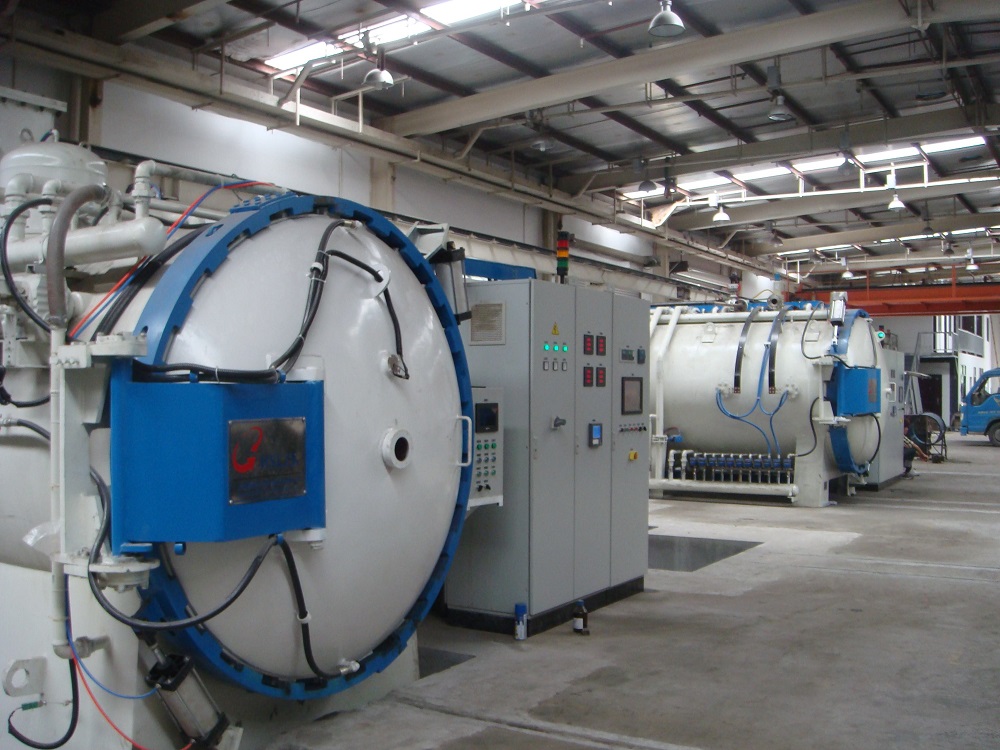Chef's Knives
Chef Knife Supply – Best Super Damascus Steel Kitchen Knives Manufacturer
In 2005 we laid the foundations of the company Yangjiang Chuanghe Industry and Trade Co., Ltd. Since then, Chuanghe has grown from strength to strength and is synonymous in Yangjiang for quality, reliability, and precision.
Today, Chuanghe is recognized as a leading manufacturer of professional catering knives to both the European and worldwide markets. They are the best-selling manufacturer in the Yangjiang, Guangdong meat market and export to such far off places as Vietnam, South Korea, German,United Kingdom,United States, and Canada to name but a few.
Quality Construction & Build
Chuanghe knives are manufactured using a combination of the modern state of the art automation and century’s old handicraft skill. Each knife goes through a meticulously managed construction process that starts from a single sheet of metal and follows through to the stylish and ergonomic end-product used by chefs around the world. The process for creating Giesser Knives involves three stages of heating, three stages of sharpening, and manual eye inspection prior to completion. A breakdown of the process is as follows:
Phase 1: The Material
Raw blades are forged from first-class 10Cr15 chrome-molybdenum steel. Then the knives are crafted by our blacksmith. The remaining material is now recycled (but will not be used for making blades).
Phase 2: Vacuum Hardening
The metal is still soft at this point and will now go through a period of heat and cooling treatment to fire the particles of the blade together, hardening it. Blades are hung and placed into a special vacuum hardening oven where they are heated to 1250°C over 4 1/2 hours and then gently cooled with liquid nitrogen to 70°C in a complete vacuum so that the heating is even and there are no impurities.

Vacuum hardening is designed to evenly distribute the different materials within the steel alloy to ensure consistency. They are then tempered in a 2nd heating stage at 200°C which takes away any stress or tension in the blade.
Phase 3: The Grinding
The first stage of the grinding of the blade is a fully automatic precision-led process managed by robots to ensure consistency. This also forms the first stage of sharpening. The second step of grinding is done by a master grinder. The blade is finished by hand with experience and know-how in the old world tradition—better than any machine could accomplish. Water is used throughout the process to keep the knives cool and to avoid overheating, which could in turn lead to microscopic cracks in the blade.
Phase 4: The Polishing
Once the grinding and initial sharpening process has been completed, the blade will then undergo the polishing phase. The finish of the blade is achieved by a polishing machine which ensures a smooth and flawless finish. This will prevent rust from forming on the blade and will make it easier to clean the knife whilst providing an aesthetically pleasing shine to the blade.
Phase 5: The Handle
Blades will then have their handles attached, where Professional Chef knives will have natural wood or G10 handles attached. Prime-Line knives undergo the same process but with a different, more rubber-based, material. Best Cut Knives undergo the process of attaching the riveted handle and then polishing the rivets & handle to give a perfect finish. Stainless steel rivets are used as they are more durable and less prone to rust.
Phase 6: The Honing
The final phase that the knife will go through involves the honing and etching of the blade.Blades are etched with logos and codes using either laser or acid branding techniques.The knife will now go through its final sharpening stage (the honing) which will add the last 15% of sharpness and is done by skilled workers using hand techniques. They will ensure that the blades have the optimum cutting angle and that it is perfectly symmetrical. A final eye check of the blade is now also undertaken before the knife is packaged and stored in the warehouse ready for shipping.
Cleaning Chef Knives
It is important to ensure that your knives, like all professional chef knives, are well maintained and properly cleaned between each use. Technically, some knives are suitable for cleaning in the dishwasher, however, we would
recommend that the knives be cleaned by hand to avoid any possible damage or stains. There are a number of reasons why professional standard chef knives should not be machine washed, these include:
- Dishwasher baskets – when knives are placed in the dishwasher basket they can be damaged during the loading and unloading as well as from the force of the water pressure. The blades are also at risk of being damaged by other objects in and around the basket.
- Dishwasher draws – dishwashers that have cutlery drawers may be damaged by the knives themselves and may lose the protective coating which prevents rust. If rust sets in it can lead to rust deposits on the blade. Blades may also be damaged in the loading and unloading stages.
- Caustic food remains – the dishwasher may be susceptible to left-over caustic food particles such as pickles, spicy sauces, or citrus fruits that can lead to unsightly spots or corrosion.
Storage
Knife blocks or inserts for gastronorm containers offer good storing methods to protect the blades from damage. Magnetic hanging knife strips are an alternative and popular way to keep your knives out on display and within easy reach of use. To easily transport your knives we would recommend you use either a knife case or a knife roll for convenient and safe transportation.

